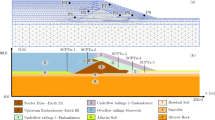Abstract
A portion of a sedimentary basin is subdivided conceptually into hexagons of equal area. The area of each hexagon is equal to the minimum area an oil field should have to be commercial. Hexagons can be ‘full’ of oil or ‘empty.’ A field size 1 consists of a cell with oil surrounded by six empty cells; a field size 2 consists of two adjacent cells with oil surrounded by eight empty cells, etc. Principles of Percolation Theory are used to determine the probability distribution of the areas of the oil fields existing in this portion of the basin. The only piece of information necessary to determine this probability distribution is the Success Ratio (number of successful exploration wells/total number of exploration wells drilled in this portion of the basin). This approach has several practical applications.
A probabilistic model is introduced to predict to which extent potential oil traps are filled with oil. The model assumes that the probability that an oil unit will end up in a particular trap, is proportional to the surface area of the trap. The model predicts that independently of the distribution of the trap volumes, there will be a critical trap volume. All the traps having a volume less than this critical volume, will be filled to spill point. An equation is deduced to predict, for all traps having a volume greater than the critical, the volume of oil that can be encountered in the trap, provided the volume of the trap is known.
Similar content being viewed by others
REFERENCES
Shante, V. K. S., and Kirkpatrick, S., 1971, An introduction to percolation theory, in Advances in Physics: Taylor & Francis Ltd., London, v. 20, no. 85, p. 325–357.
Sykes, M. F., and Glen, M., 1976, Percolation processes in two dimensions I. Low density series expansions: Jour. Physics. A, Math. Gen., v. 9, no. 1, p. 87–95.
Author information
Authors and Affiliations
Rights and permissions
About this article
Cite this article
Anderson, M., Gullco, R.S. Probability Estimates of Field Areas and Trapped Oil Volumes. Natural Resources Research 10, 149–158 (2001). https://doi.org/10.1023/A:1011505027320
Issue Date:
DOI: https://doi.org/10.1023/A:1011505027320




